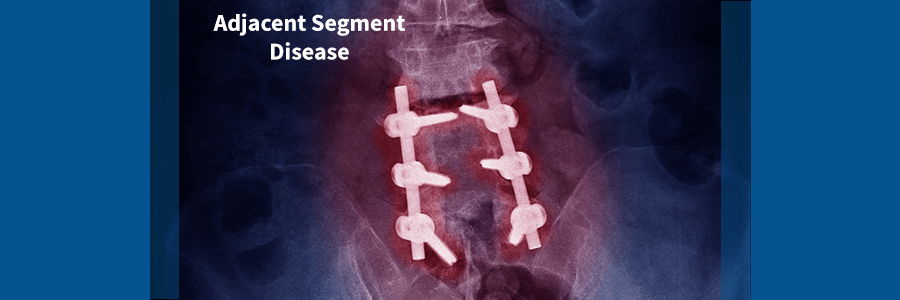-
Pain Topics
- Ankylosing Spondylitis (0)
- Arthritis (5)
- Back Pain (35)
- Bulging Disc (3)
- Degenerative Disc Disease (2)
- Facet Joint Syndrome (1)
- Failed Back Surgery (1)
- Foraminal Stenosis (2)
- Herniated Disc (5)
- Kyphosis (1)
- Neck Pain (14)
- Osteoporosis (2)
- Paget's Disease (1)
- Pinched Nerve (3)
- Radiculopathy (1)
- Sciatica (5)
- Scoliosis (5)
- SI Joint Arthritis (1)
- spinal cord injury (4)
- Spinal Deformity (1)
- Spinal Fractures (3)
- Spinal Stenosis (2)
- Spinal Tumors (1)
- Spondylolisthesis (3)
- Spondylosis (2)
- Whiplash (2)
-
Treatment Topics
- ALIF (2)
- Artificial Disc Replacement (1)
- At Home Care (4)
- Chiropractic Care (3)
- Corpectomy (1)
- Diagnostic Procedures (2)
- Diet & Healthy Lifestyle (6)
- Everyday Ergonomics (2)
- Exercises & Stretches (4)
- Facet Joint Infection (1)
- Foraminotomy (2)
- Kyphoplasty (2)
- Laminectomy (2)
- Laminotomy (2)
- Massage Therapy (1)
- Microdisectomy (2)
- Minimally Invasive Spine Surgery (13)
- Nonoperative Solutions (7)
- Pain Management (6)
- Physical Therapy (2)
- PLIF (3)
- Revision Spine Surgery (2)
- Scoliosis Brace (2)
- Self-Care (7)
- Spinal Fusion (3)
- TLIF (3)
- XLIF Corpectomy (4)
-
Media & Interactive
Top Causes of Failed Back Surgery
You’ve suffered with chronic back pain for a long time. After trying more conservative approaches, you finally decided that back surgery was your best option. You even had high hopes, believing that you would finally get a chance to get your life back.
To your dismay, pain symptoms didn’t go away. Or maybe they came back a couple months after surgery. All you wanted was relief, but the pain persists.
Sometimes back surgeries aren’t successful. The postoperative pain can be demoralizing and leave you with more questions than answers. Use this resource to discover some of the main causes of a failed back surgery and what treatment options are available.
What is Failed Back Surgery?
Sometimes known as failed back surgery syndrome (FBSS) or post-laminectomy syndrome, this condition occurs when one experiences continued pain after a back surgery. In some cases, pain begins right after surgery. Others may enjoy a period with little or no pain, but then more intense pain returns.
This pain may occur in the same area as the initial pain or move to other areas of the back. One may also experience radicular pain—a type of pain that radiates to the legs and feet because a nerve root is affected.
Studies indicate that between 8-40 % of individuals experience FBSS, depending on the type of surgery and the patient’s initial condition.

Why Do Back Surgeries Fail?
There are several reasons why a back surgery can fail. Sometimes pinpointing the exact reason can be difficult. Here are some of the more common causes of a failed back surgery.
Poor Candidate for Surgery
Some people with back pain may benefit from more conservative treatments. Receiving a thorough physical examination along with the appropriate diagnostic imaging can determine if back surgery is right for you. Make sure your doctor performs a comprehensive examination including understanding your medical history. X-rays, CT scans, MRIs, and bone scanning are all tests the doctor should consider when diagnosing your condition.
It is also recommended that your doctor performs a psychological review. Anxiety, depression, hypochondriasis, and other social characteristics may also play a role in your surgery’s success. In fact, psychological factors may be just as important, if not more, than some of the spine’s structural issues.
Some individuals have conditions that can cause back surgery to do more harm than good. For example, surgery is not recommended for someone has disc degeneration at multiple levels. Surgery for this condition may cause you to lose too much mobility in your spine.
Older people may be at a higher risk of developing complications from back surgery. Their bodies may not be able to handle the rigors of recovering from surgery. There is no set age when surgery isn’t considered appropriate, so be sure to consult with your doctor.
It may be a good idea to get a second, or even third, opinion about your treatment options. This prevents a hasty decision guided by a busy surgeon. It also allows you to find the right surgeon who can clearly explain his expectations for the outcome of the surgery.
Incorrect Procedure or Diagnosis
An incorrect diagnosis is one of the most common causes of a failed back surgery. For example, arthritis of the spine may be diagnosed as lumbar disc disease. Surgeons have different ways to determine the cause of your back pain. Some may order several imaging tests. Others rely on clinical observation alone.
In addition, since everyone’s spine is unique, the surgeon may have problems locating the exact area of surgical intervention. For example, the surgeon may remove a nearby disc instead of the one causing you pain.
This is another reason why it is so important to receive a thorough examination by a dedicated spine specialist. In addition, seeking a second opinion may seem like a hassle, but it may be the difference between continued pain and a successful back surgery.

Surgeon Error
Even though orthopedic surgeons undergo extensive training, error sometimes occurs. Back surgery is complicated and each person’s body presents unique challenges. Many cases of FBSS occur when the surgeon doesn’t create appropriate decompression to the affected area.
Minimally invasive surgery has several advantages. These include smaller incisions, less damage to soft tissues, and a faster recovery time compared to open back procedures. A small percentage of minimally invasive procedures—around 2 percent—fail due to surgeon error. Less exposure to the affected area can cause mistakes (for example, if a small piece of a herniated disc was missed during a microdiscectomy).
Since the surgeon is working in such a small, sensitive area of the body, nerve damage can also occur during the procedure.
Scar Tissue Formation
Even with a successful back surgery, some scar tissue forms in the area of the operation. When scar tissue forms near a root nerve, it could cause continued pain after the surgery. The pain from scar tissue formation usually occurs between 1 and 3 months after surgery.
Recurrent Disc Herniation
When the inner layer of the spinal disc presses past the damaged outer layer, it creates a bulge, putting pressure on a nerve. Many people choose to receive a microdiscectomy to treat this problem. This procedure involves removing a small portion of the damaged disc so it no longer presses on the nerve.
After the surgery, what’s left of the disc is responsible for handling the load of all your movements. For many, the disc does well adapting. Other may experience recurrent disc herniation, where it bulges again and affects a nearby nerve.
Adjacent Segment Disease
Adjacent segment disease (ASD) can occur after a spinal fusion. A fusion surgery is necessary when the bones of the spine become so unstable they press on nearby nerves. The surgeon removes the damaged disc and replaces it with a bone graft and hardware to lock it in place. In time, the bone graft helps the two affected bones to grow together as one. Unlike a minimally invasive surgery where part of the disc is removed, this surgery is more involved and prone to complications.
While this procedure has several advantages, it does make the spine less flexible and mobile. This puts added stress on the vertebrae above and below the fused bones. In time, ASD can occur when these neighboring vertebrae start to break down.

Hardware Failure and Implant Rejection
In addition to ASD, spinal fusion surgeries can have other complications that lead to FBSS. During the fusion surgery, spinal hardware, typically metal screws, are inserted into the area to make it more stable while the spinal bones fuse. Like any hardware, it has the potential to bend or break while supporting the spine’s movements.
Hardware failure typically occurs in obese patients who have multiple areas of the spine fused. This condition is less likely in physically fit individuals who have had only a single level of fusion.
Implant rejection becomes an issue when the body doesn’t accept the bone graft that is placed between the two affected spinal bones. Known as pseudarthrosis, this condition can occur for a number of reasons. Some factors that increase the risk of the bone graft not “taking” include: smoking, obesity, diabetes, osteoporosis, and rheumatoid arthritis.
Patients have a much better chance at the bone graft being accepted when it is extracted from another area of their body. The risk of implant reject increases when using a bone from a cadaver or a bone graft substitute.
Treating a Failed Back Surgery
The treatment of a failed back surgery syndrome can be difficult for the patient and doctor. Generally, a multidisciplinary approach works best to help relieve symptoms. This includes the help of physical therapy, pain specialists, spine surgeons, and psychiatrists.
Similar to before the surgery, you want to make sure you have a thorough examination and appropriate diagnostic imaging. This includes the team accurately knowing the type, as well as how much pain you are experiencing.
Medication Management
Typically, pain medication is prescribed to decrease the discomfort of your pain. The first line of treatment is often NSAIDs like aspirin and ibuprofen to help reduce pain and inflammation. This often helps with lower levels of back pain. If over-the-counter drugs don’t provide relief, you may be prescribed more powerful drugs like a combination of paracetamol and tramadol or opioids. For back spasms, muscle relaxants may also be prescribed.
If the failed back surgery is causing you mental or emotional issues, doctors may also prescribe antidepressants. These drugs not only help with stabilizing moods, they also have some pain-relieving properties. Antiepileptic drugs can also be used to target the source of nerve pain.
As with all prescriptions, you want to weigh the risks and rewards before taking them. Some medications may have dangerous side effects. Others run the risk of dependence, especially if you have had prior substance abuse issues.

Physical Therapy
Physical therapy can help to improve function and relieve pain for those who suffer with back pain. This could include exercises to help strengthen the abdominal and back muscles. Stronger core muscles help to stabilize the spine and absorb more of the shock from everyday movements. A physical therapist will work with you to design an appropriate exercise program based on your condition.
Revision Spine Surgery
If more conservative approaches don’t seem to be helping you after a few months, surgical treatments may be the next option.
Some common surgical treatments to help relieve pain include:
- Nerve Blocks: Injections of steroids into the spine to help reduce pain and inflammation.
- Spinal Cord Stimulation: Implanting electrodes into the spine to deliver low-voltage electrical currents that block pain sensations from reaching the brain.
- Intrathecal Drug Infusion: Using pumps and catheters, implanted near the spine to deliver pain medication directly into the spinal fluid.
In addition to these pain-relieving procedures, a surgeon may elect to perform a revision spine surgery. For example, the surgeon may remove even more of an affected disc to relieve compression on the nerve. For recurrent disc herniation, a surgeon may opt to remove the disc and instead place a graft that allows the spine to fuse.
Getting Help for your Failed Back Surgery
If you’ve suffered from the discouragement of a failed back surgery, you certainly want answers. New York City Spine will help you make informed decisions about your treatment options. Our team of experts includes pain management specialists, physical therapists, chiropractors, and acupuncturists who are dedicated to giving you relief.
If you’re currently experiencing the effects of FBSS or if you’re simply looking for a second opinion for your back pain treatment options, New York City Spine is here to help. Schedule an appointment now to meet with Harvard-trained Dr. Daveed Frazier. Make the first step toward getting back the life that you deserve!
Explore New York City Spine

